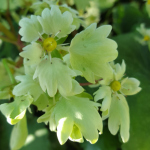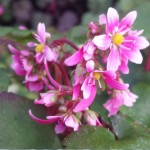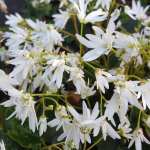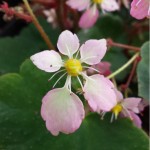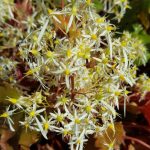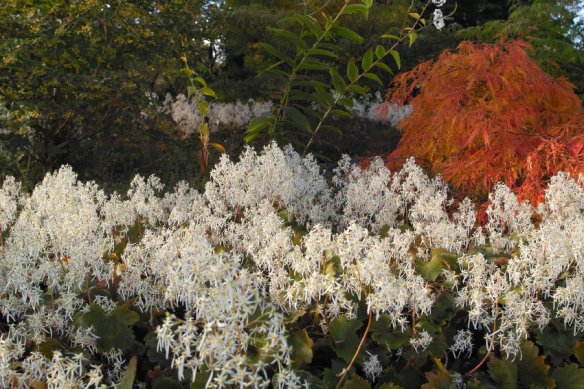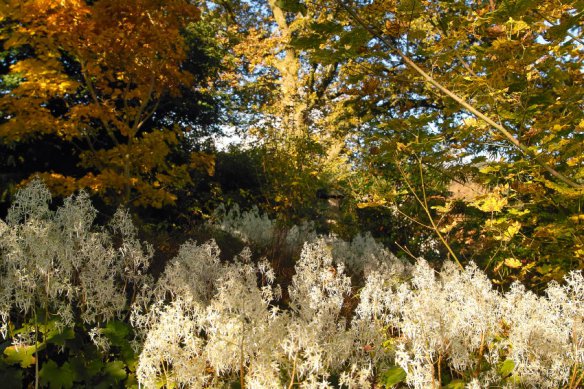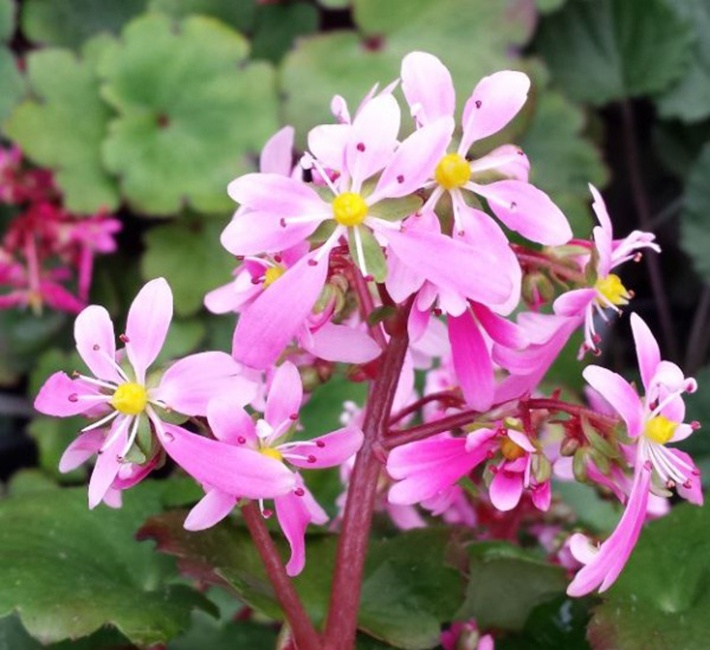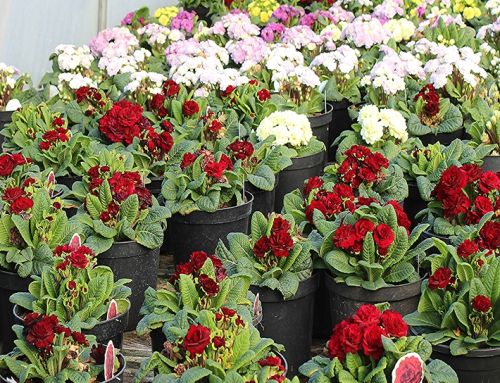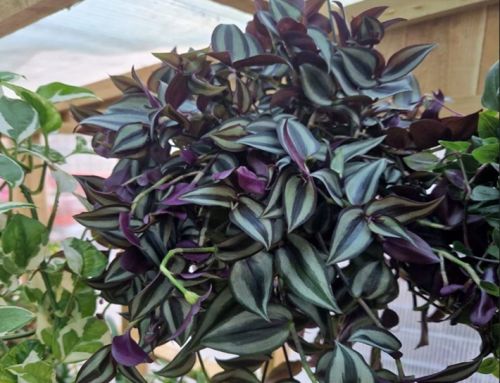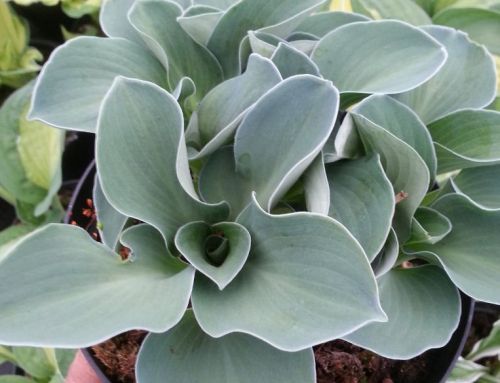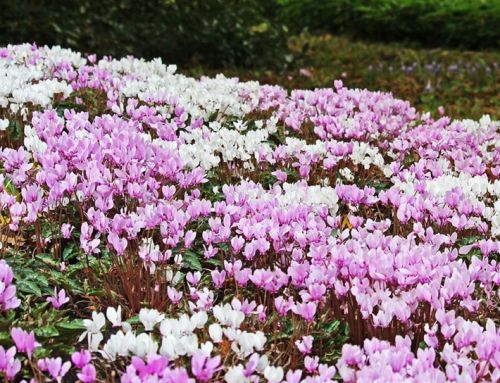
 Saxifraga fortunei and its related varieties are a massive group of plants that are not widely known or grown. Everything about them is interesting. Their foliage, their flowers, their favoured location and the time of year that they bloom. All of these attributes add up to give us a plant that should be grown in all gardens.
Saxifraga fortunei and its related varieties are a massive group of plants that are not widely known or grown. Everything about them is interesting. Their foliage, their flowers, their favoured location and the time of year that they bloom. All of these attributes add up to give us a plant that should be grown in all gardens.
 Several years ago I was introduced to these by a group of Japanese plantsmen who came over to the nursery to look at our Hellebores. As is customary they brought with them gifts, and in this case those gifts were some beautiful varieties of Saxifraga fortunei. So that was it – the obsession had started!
Several years ago I was introduced to these by a group of Japanese plantsmen who came over to the nursery to look at our Hellebores. As is customary they brought with them gifts, and in this case those gifts were some beautiful varieties of Saxifraga fortunei. So that was it – the obsession had started!
Over the years we have been slowly building up our collection and hopefully we will have enough to sell in 2017.
So here goes… this is why I love them so much.
 That shady area.
That shady area.
Every garden seems to have a corner that is dull or badly lit, be it by overhanging shrubs and trees or by buildings and these spots can be quite a challenge. So what can we do? Well these areas should be cherished and not despised. Gems such as Hellebores, Epimediums, hardy Cyclamen and Wood Anemones, to mention a few. These will add interest but most of these are spring flowering. In order to brighten these areas at the other end of the year the Saxifrages are perfect. Flowering from August, right up until Christmas if the weather is kind. As a result their frothy mounds of tiny flowers roll out gently giving a glistening Gypsophila-like effect.
 A woodland plant in the wild, it was brought to Europe from China in the mid-19th century by the plant-hunter and adventurer Robert Fortune.
A woodland plant in the wild, it was brought to Europe from China in the mid-19th century by the plant-hunter and adventurer Robert Fortune.
 He was taken as much by their glossy succulent-like leaves, which form beautiful mounds, as their flowers. The original leaf form was only slightly tinged with colour, however modern breeding methods, especially in Japan, have given us a range of colours that shine even before the flowers make their welcome appearance. Nowadays leaf colour is almost as important as the blooms themselves, From rusty reds to deep purple, sumptuous bronzes and deep green they add something special. There is even a variegated one or two.
He was taken as much by their glossy succulent-like leaves, which form beautiful mounds, as their flowers. The original leaf form was only slightly tinged with colour, however modern breeding methods, especially in Japan, have given us a range of colours that shine even before the flowers make their welcome appearance. Nowadays leaf colour is almost as important as the blooms themselves, From rusty reds to deep purple, sumptuous bronzes and deep green they add something special. There is even a variegated one or two.
The blooms themself have also come a long way. The original white variety, ‘Wadas Form’, is still as good as ever, its light airy drifts of flowers seeding freely if happy in its location. However different colours have crept, if not flooded in! Nowadays they occur in a multitude of shades from palest pink, to almost red. There are several double forms and one or two bordering on yellow. Furthermore the unusual shape of the flower is interesting too with the bottom two petals much larger than the rest.
blooms themself have also come a long way. The original white variety, ‘Wadas Form’, is still as good as ever, its light airy drifts of flowers seeding freely if happy in its location. However different colours have crept, if not flooded in! Nowadays they occur in a multitude of shades from palest pink, to almost red. There are several double forms and one or two bordering on yellow. Furthermore the unusual shape of the flower is interesting too with the bottom two petals much larger than the rest.
 To grow well they prefer a sheltered spot, they are completely hardy but the longer the worst of the frost can be kept from their delicate flowers the longer the colour period will persist. Give them a soil which is well drained yet moisture retentive which can be achieved by digging in lots of well rotted compost, leaf mould or bark.
To grow well they prefer a sheltered spot, they are completely hardy but the longer the worst of the frost can be kept from their delicate flowers the longer the colour period will persist. Give them a soil which is well drained yet moisture retentive which can be achieved by digging in lots of well rotted compost, leaf mould or bark.
 If you would like to be notified when these jewels become available send us an email and we will give you the opportunity to ‘jump the queue’ and get these before they become widely available.
If you would like to be notified when these jewels become available send us an email and we will give you the opportunity to ‘jump the queue’ and get these before they become widely available.
Massive thanks to Julian and Fiona Wormald, ‘The Garden Impressionists’ for the pictures of saxifraga fortunei growing in their fabulous garden, website thegardenimpressionists
For more details see here

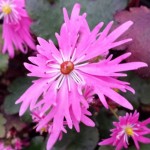
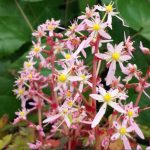
 That shady area.
That shady area.